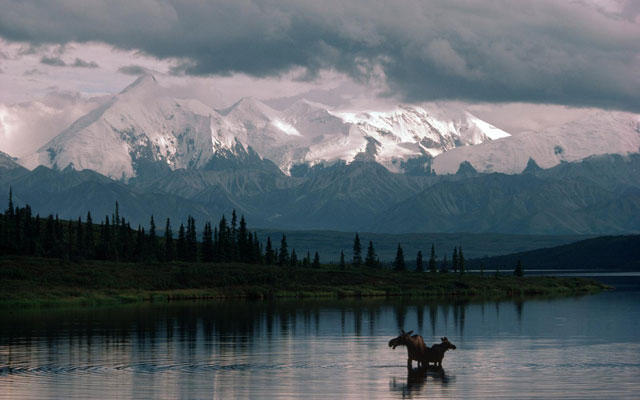
Public lands managers in Alaska say climate change brings new challenges to the decadeslong dilemma over balancing resource extraction with conservation of undeveloped land within the state’s 425 million acres.
“That’s a huge scale – it’s a continental-sized landmass that’s being managed,” says Mark Myers, who managed Alaska’s 100 million-acre share of that landmass – a chunk about the size of California – until about two months ago, when he resigned his job as the state’s Department of Natural Resources commissioner.
Myers said in a recent forum on Arctic policy at the University of Alaska-Fairbanks that conservationists believe vast expanses of land should be protected because they’re the last opportunities in the United States to preserve entire healthy ecosystems.
“Other parts of the country – that land’s been overwhelmed by development,” he said. “There is very little truly functional ecosystem land left. In Alaska, it’s largely intact.”
But much of that land also holds valuable natural resources, and Myers says climate change has complicated the task of balancing conservation and development because warming has melted enough sea ice to open up access to those resources.
“Our sea routes – they’re opening, with the changes in sea ice,” he said, “and that’s putting some significant new demands, in terms of infrastructure, in terms of stressors, and in terms of a need to monitor and understand the environment.”
Myers says despite today’s low prices, demand for oil and gas in the coming years will increase, and that and other resources in the circumpolar north will draw industry here.
“A huge part of the undiscovered resource endowment left in the world sits in the Arctic,” he said. “And of that, about 27 percent of that sits in Alaska.”
International law professor Betsy Baker says much work needs to be done to enable development of those resources, including infrastructure such as deep-water ports and further surveys of the Arctic Ocean floor. Meanwhile, Baker says managers and leaders must carefully plan to achieve a balance between conservation and development.
“We still have a chance to get it better up here, to get it right,” she said.
Baker, who sat in on the Arctic-policy forum, says projects like the Red Dog zinc mine in northwestern Alaska demonstrate the economic benefits of a well-managed resource-development operation that also protects the ecosystem in which the mine operates.